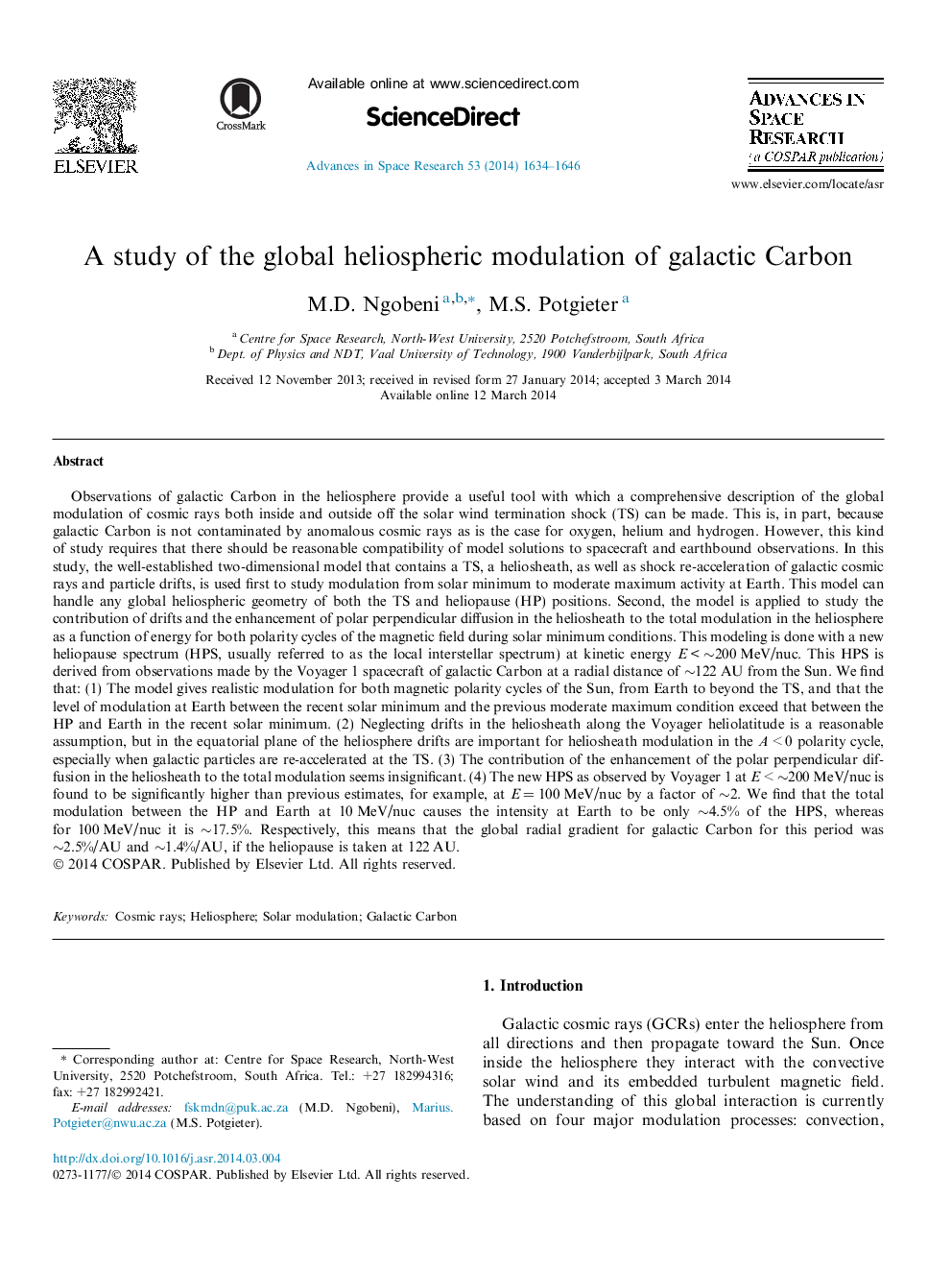| کد مقاله | کد نشریه | سال انتشار | مقاله انگلیسی | نسخه تمام متن |
|---|---|---|---|---|
| 1764064 | 1020038 | 2014 | 13 صفحه PDF | دانلود رایگان |
Observations of galactic Carbon in the heliosphere provide a useful tool with which a comprehensive description of the global modulation of cosmic rays both inside and outside off the solar wind termination shock (TS) can be made. This is, in part, because galactic Carbon is not contaminated by anomalous cosmic rays as is the case for oxygen, helium and hydrogen. However, this kind of study requires that there should be reasonable compatibility of model solutions to spacecraft and earthbound observations. In this study, the well-established two-dimensional model that contains a TS, a heliosheath, as well as shock re-acceleration of galactic cosmic rays and particle drifts, is used first to study modulation from solar minimum to moderate maximum activity at Earth. This model can handle any global heliospheric geometry of both the TS and heliopause (HP) positions. Second, the model is applied to study the contribution of drifts and the enhancement of polar perpendicular diffusion in the heliosheath to the total modulation in the heliosphere as a function of energy for both polarity cycles of the magnetic field during solar minimum conditions. This modeling is done with a new heliopause spectrum (HPS, usually referred to as the local interstellar spectrum) at kinetic energy E < ∼200 MeV/nuc. This HPS is derived from observations made by the Voyager 1 spacecraft of galactic Carbon at a radial distance of ∼122 AU from the Sun. We find that: (1) The model gives realistic modulation for both magnetic polarity cycles of the Sun, from Earth to beyond the TS, and that the level of modulation at Earth between the recent solar minimum and the previous moderate maximum condition exceed that between the HP and Earth in the recent solar minimum. (2) Neglecting drifts in the heliosheath along the Voyager heliolatitude is a reasonable assumption, but in the equatorial plane of the heliosphere drifts are important for heliosheath modulation in the A < 0 polarity cycle, especially when galactic particles are re-accelerated at the TS. (3) The contribution of the enhancement of the polar perpendicular diffusion in the heliosheath to the total modulation seems insignificant. (4) The new HPS as observed by Voyager 1 at E < ∼200 MeV/nuc is found to be significantly higher than previous estimates, for example, at E = 100 MeV/nuc by a factor of ∼2. We find that the total modulation between the HP and Earth at 10 MeV/nuc causes the intensity at Earth to be only ∼4.5% of the HPS, whereas for 100 MeV/nuc it is ∼17.5%. Respectively, this means that the global radial gradient for galactic Carbon for this period was ∼2.5%/AU and ∼1.4%/AU, if the heliopause is taken at 122 AU.
Journal: Advances in Space Research - Volume 53, Issue 11, 1 June 2014, Pages 1634–1646
